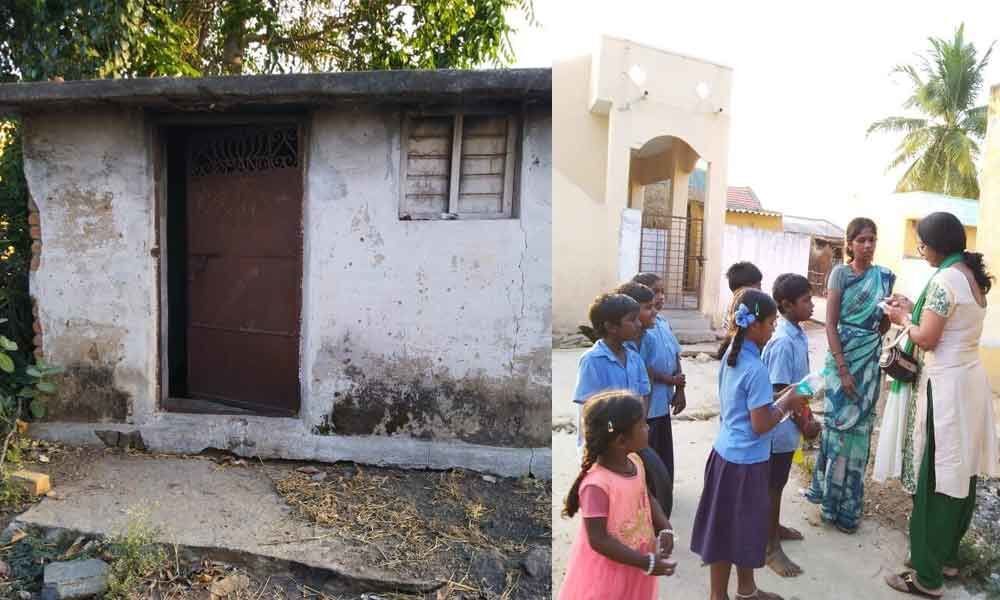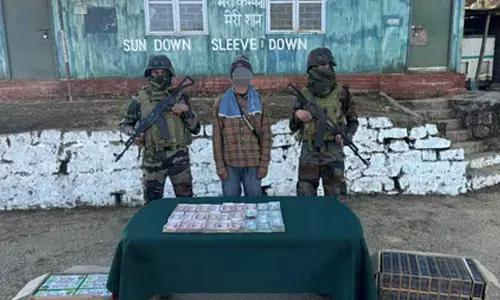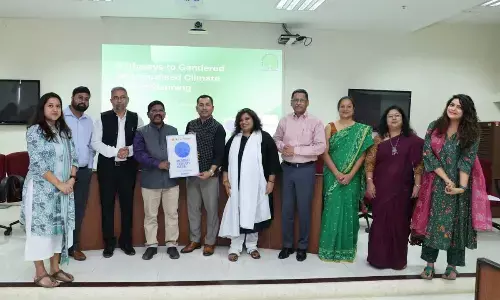Where Menstrual Huts are still a thing

On the occasion of Women’s day, the women cell of Dravidian University invited me to Kuppam.
On the occasion of Women's day, the women cell of Dravidian University invited me to Kuppam. Whenever, I go to a new place, I make it a habit to study its historical aspects as well as the problems specific to the locality.
Thus, with the help of few research scholar friends, I visited 'VurinayanaPalli' and its surrounding villages of the Kuppam constituency, Andhra Pradesh. While the world is shining bright with the sparkling achievements of women, I happened to see a menstrual hut ('Muttu Gudise' in local Parlance) for the first time.
I am not talking of the past; I am talking of the present. These 'untouchable huts' are continuing even now in the states of Chhattisgarh, Andhra Pradesh and Odisha under different names. It is an irony that this custom present in middle ages is still being practiced in Kuppam.
We can find these huts in the villages of 'VurinayanaPalli', 'VurinayanaKothuru', 'Palyam', 'Ekalanatham' in the Tamilnadu border. People generally show interest or respect the political, social and economic movements. Most people fail to give importance to the issues of menstruation. So, it remains to be a woman issue rather than a human rights issue.
So, I wanted to visit these huts to see how this superstition is idiosyncratic. According to the experiences of the activist who visited these places earlier, it appeared that the women of these villages hated discussing this taboo. The women won't allow you, if they don't have trust in you. Some government officials too have faced a similar problem.
I stepped into the village of Vurinayanapalli as the dusk fell. I roamed the bylanes of the village with school children following me. Gathering support from the children, I approached the elders. Few minutes later, the Anganwadi teacher and her helper joined us.
We stopped in front of a house. A woman sitting on the slits land on the way to the house was looking at us in suspicion. As I sat beside her, Children sat around us pushing each other. Our conversation steered to the issue of 'menstrual huts'. When I asked them to let me visit one, they reprimanded me as if it were an offence.
After couple of hours of chit-chat, I sought their permission once again. They discussed among themselves if my visit had any scriptural sanction.
They giggled and put forth a condition that I should not touch any one after the visit and leave immediately as I would get defiled by the visit. Then I entered a 'menstrual hut' and took some photographs.
I might be the first person permitted to enter a 'menstrual hut' from the outside world.
During menstruation girls and women are made to stay in the menstrual hut. The same rule holds for women, just after their delivery. They must stay in these huts with their newborn babies until they take their first bath (Purity Bath). The construction of the hut would not lay behind any American or German concentration camp.
Irrespective of the number of women using the hut during their period in the village at the same time, they should crouch on their knees in the room measuring 10 feet by 10 feet- there is no other way.
The pitch-dark room has no bathroom and no power. If one closes the door, no air would get in. The doors are damp with dark green moss. Bad stenchbreaks the nostrils. During the rainy season rubbles fall from the ceiling. Water leaks continuously from the ceiling and the insanitary conditions cause contagious diseases and respiratory infections. During summer, the soaring heatwave causes heat stroke and diarrhea.
There is no end to poisonous creatures creeping in. In 'Palayam' village, we don't find even a room like this hut. Women sleep on the 10-feet-wide road by the drain. The menstruating women wakeup even before the village gets up, go to the field and take a bath at the borewell or in the canals.
They wash their 'impure' clothes and hang them dry. Few girls, who use sanitary napkins get up before the sunrise, dig small pits and bury the pads in them or sense discomfort until they reach the school, where they exchange their pads.
The women go to the work in fields and elsewhere and by evening return to their sheds. The other women from their house or the women from the neighbouring houses bring them some food.
The argument that menstruating women need rest and so require this 'menstrual hut' does not go well in the modern times. During the day they cannot avoid work. They have to go to fields to work. While the women spend the three days in the hut, their men get their food from outside.
Even talking to menstruating women is an offence. These women have to finish the work piled for three days after taking the 'MailaSnanam' (bath taken at the end of menstruation).
No woman gets exemption from this practice or custom. The woman teacher working in the elementary school has to go on leave on these three days and face salary cut. Anganwadi teachers and their helpers too have to face similar fate.
One teacher told me that she hopes a Sunday would fall on one of these three days. And the fact that the date for her period is delayed for two months is a matter of ridicule and the other women in the village are harassing her with their harsh words.
During village festivals the villagers banish the girls above 10 years of age for eight days out of the village if they happened to get their first menses during the festival while in village it is considered ominous.
Villages keep them in Anganwadi centers during the festival. 'Is this all to your liking'? 'You can say 'no' to this', I asked the women, who beating their cheeks with their hands, told me, "if 'Goddavulu''Mallaiah' and 'Kadiri Narasimha Swamy' get angry, the village will be destroyed.
So, we are staying in the 'menstrual hut' willingly". When they repeatedly requested me to see that the menstrual huts are provided with basic amenities like power, bathroom, and water, I was in a dilemma. Should we try to eradicate this practice first or should we provide the facilities required?
How to look at these local beliefs, I began to ponder over this issue , and it was taken up during the discussions held that night with research scholars and the professors of Dravidian University.
Most of them concurred with the opinion that every change has a process and we should take up measures that aid the process. And we should at once get this women out of this inhuman practice of subjecting them to social exclusion.
It is violation of human rights to treat the physiological process of menstruation as untouchability and impose unwanted religious and cultural beliefs and restrictions on them. Both the state and Central government should identify these huts and take measures immediately to remove them.
The political parties, who measure everything with the votes won't easily take up issues that are related to the religious and cultural beliefs. Only through long-term measures, the age-old beliefs will disappear.
We should think seriously how far it is possible to provide the few facilities demanded by the menstruating women, who abide by these impractical rules and regulations unacceptable to any creature in this creation and spend their periods in the most abominable sheds and huts or by the roadside.
"Human beings aspire for better life, if the period huts get better conditions now, tomorrow they will think of solving the period problems. Every moment in this direction leads to new awareness"; our new friends Varadarajulu and Srinivas opined.














